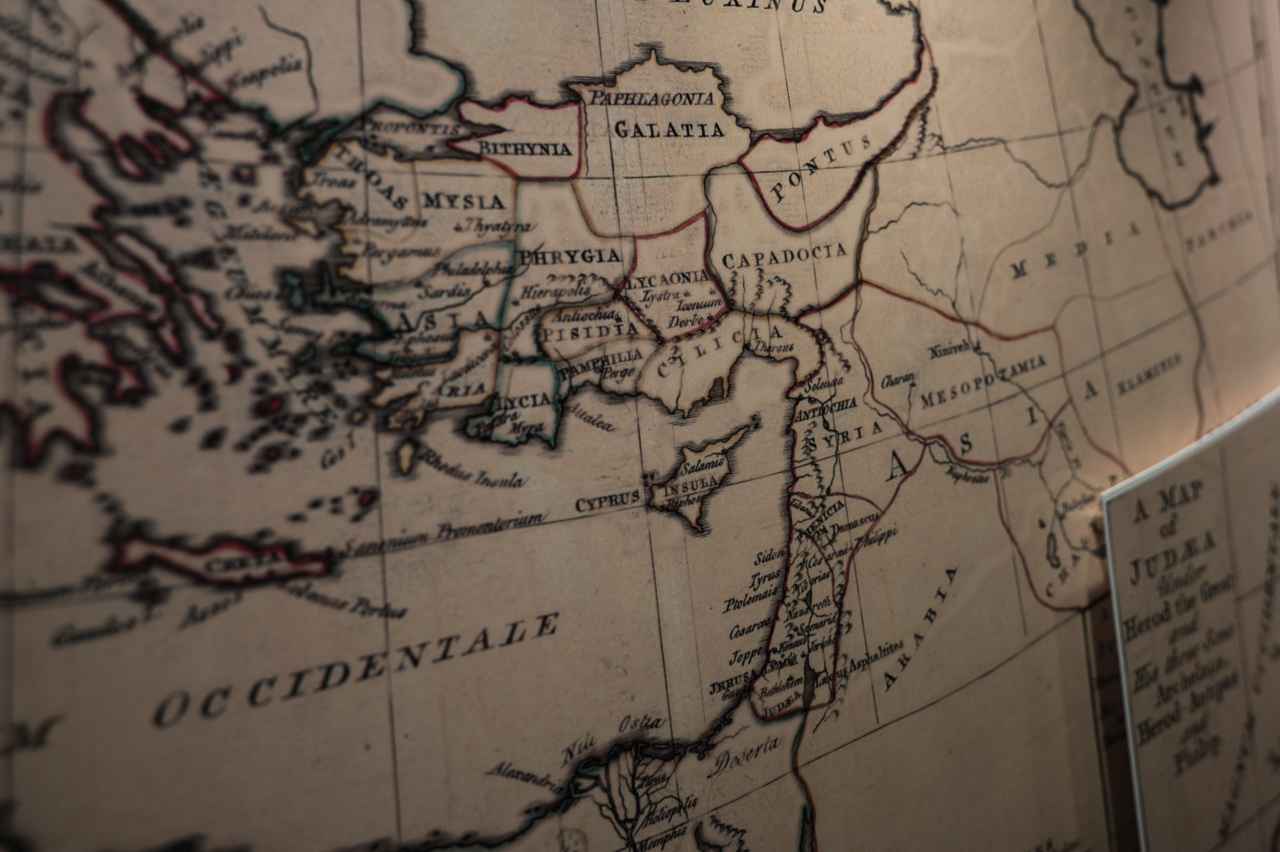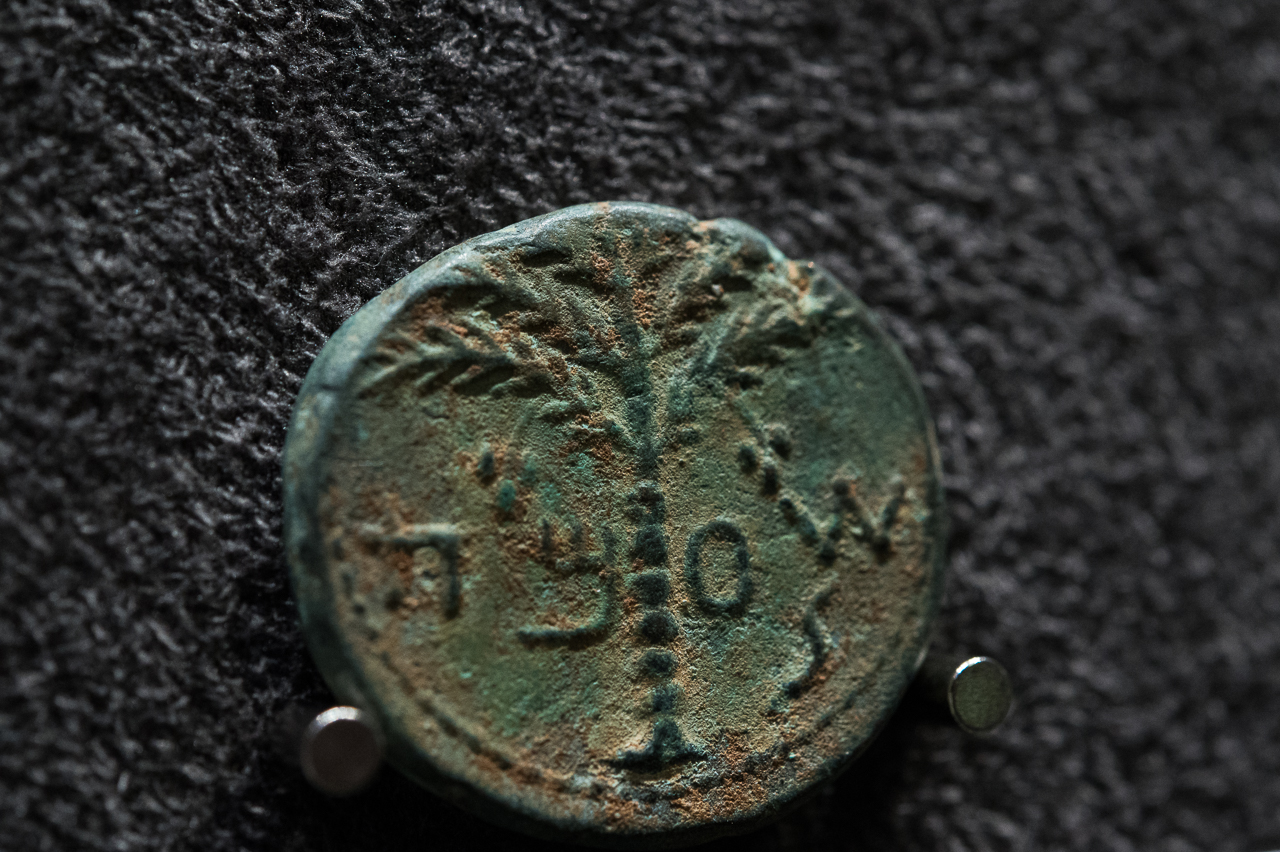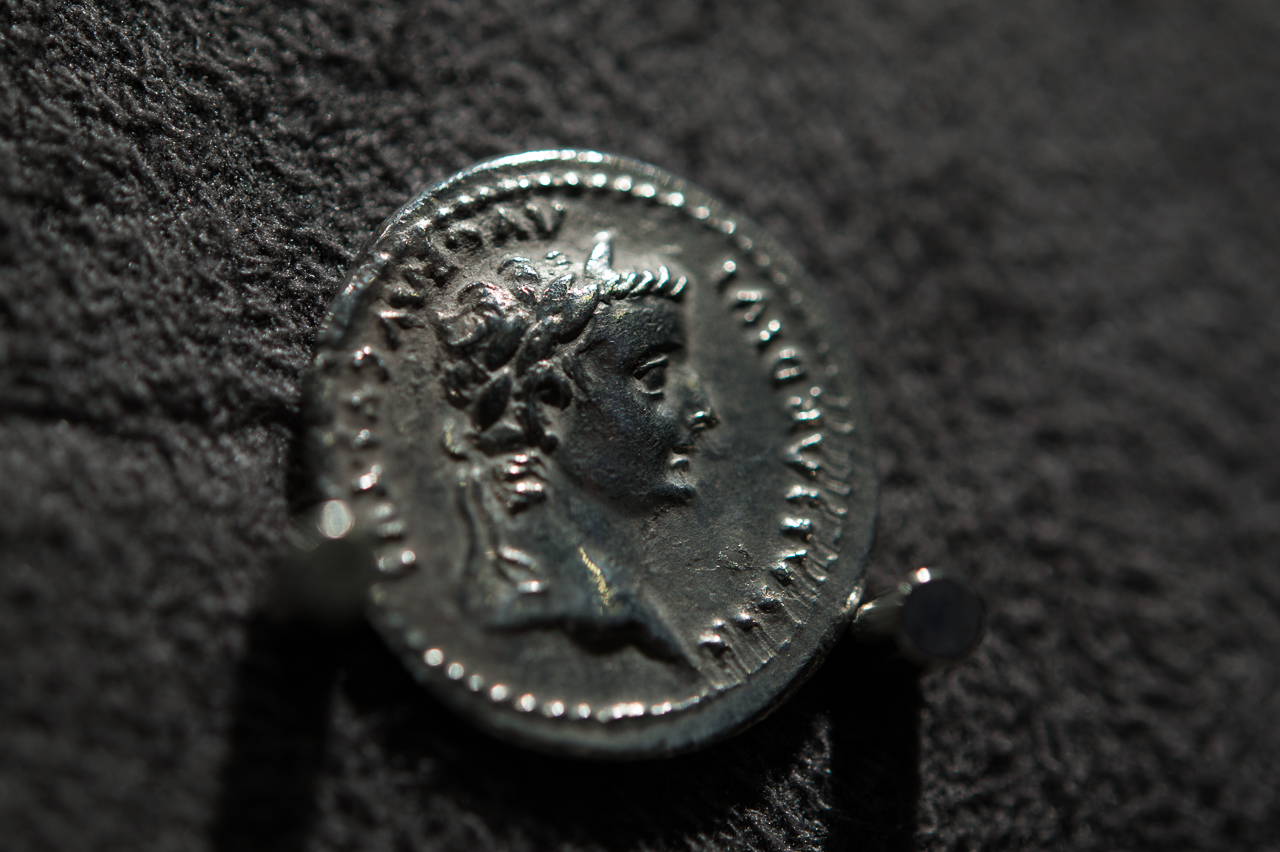“Render unto Caesar the things that are Caesar’s, and unto God the things that are God’s…”
Brak tytułu
Brak krótkiego opisu
A new permanent exhibition has opened at the NBP Money Centre, telling the story of money circulating in ancient Judaea (the current territory of Israel and Palestine) in the time of Jesus Christ, in other words, from around 7 BC to 30 AD.
The central place of the exposition is occupied by a map of the Mediterranean region from the 18th century depicting the Greco-Roman world and the places mentioned in the Bible. The areas of Judaea and the city of Jerusalem have been additionally enlarged.
To the left of the map is a collection of various Roman, Greek and local coins which served the inhabitants of the region for various purposes – for paying state or temple taxes and also for daily purchases at the markets.
Therefore, there are silver denarii of the emperors Augustus and Tiberius, introduced by the Roman invaders. There are silver shekels (tetradrachms) and half-shekels (didrachms) from the Phoenician city of Tyre, which neighboured Palestine and which, as a strong centre for commerce and trade and a Mediterranean port, for a long time minted good silver coins, which were popular throughout the region. In Jerusalem, too, the priests of the Jewish temple issued shekels and half-shekels closely based on the Phoenician coins – so closely, in fact, that sometimes it is difficult to tell the difference between the coins from Tyre and the imitations from Jerusalem.
Small bronze Roman coins from the time of Augustus and Tiberius, bronze prutahs of the local Herodian dynasty and prutahs of Roman governors (procurators) of Judaea circulated among the local population, ensuring coinage for small, daily settlements. Among these we find, among others, money minted by characters known from the Gospel – Herod the Great, the king of Judaea, and Pontius Pilate, the fifth governor.
Converters of these currencies and several examples of the prices of staple goods and services illustrate roughly the purchasing power of the money at that time, both of the valuable silver coins and of the fractional bronze local coins.
To the right of the map is a modest selection of quotes from the Bible mentioning money. Next to each of them is a sample coin which the quote refers to.
However, it is not always possible to unequivocally assign a type of money to a specific reference or parable. While there is no major problem with the proverbial “widow’s mite” or “tribute penny”, the “lost coin” causes numismatic controversies.
However, Judas’s notorious “pieces of silver” evokes the most emotions. To this day, it is not known exactly what coins the Jewish priests paid Judas, for the pieces of silver could be Roman denarii and shekels from Tyre or Jerusalem, or even Syrian tetradrachms from Antioch.
We invite you to visit the NBP Money Centre.
Dr Eliza Walczak, NBP Money Centre



